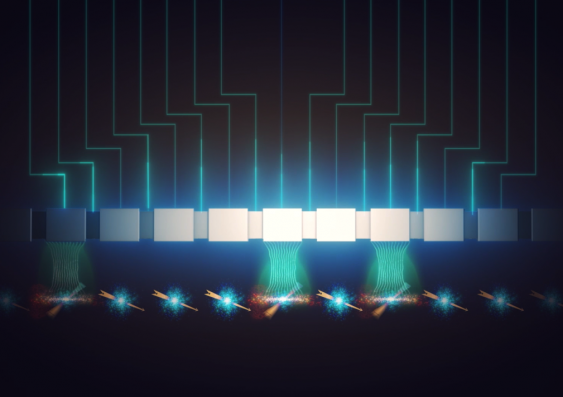Science & Technology, Australia (Commonwealth Union) – The recent advancement of technology has seen a multitude of key functions carried out by computers, from analytical technology to evaluate gigantic quantities of data to voice recognition technology as a security feature.
Researchers have discovered a previously unknown effect makes compact, ultra-fast control of spin quantum bits feasible.
Engineers from The University of New South Wales, (UNSW) have found a new way of accurately controlling single electrons lying in quantum dots that run logic gates. The new system has also lower bulk needing less parts, that maybe critical in bringing about large-scale silicon quantum computers as a reality.
This key finding was, made by engineers from the quantum computing start-up Diraq and UNSW.
“This was a completely new effect we’d never seen before, which we didn’t quite understand at first,” said lead author Dr Will Gilbert, a quantum processor engineer at Diraq, a UNSW spin-off company situated at the Kensington campus, and he further stated that it swiftly became apparent that this was a powerful new process of controlling spins within a quantum dot which was super exciting.
Logic gates are simple building block of entire computations. They permit ‘bits’ or binary digits which are 0s and 1s to work jointly in processing information. But a quantum bit is present in both of these states at once. This is a condition referred to as a ‘superposition’ permitting a large amount of computation strategies, where some exponentially quicker, some functioning simultaneously, going beyond classical computers. Quantum bits themselves consist of ‘quantum dots ‘with tiny nanodevices able to capture one or a few electrons. The accurate control of the electrons is required for computations to take place.
As the researchers tested various geometrical combinations of devices just billionths of a meter in size that control quantum dots, together with various types of tiny magnets and antennas carrying out their operations, Dr Tuomo Tanttu from UNSW Engineering came across a strange effect.
“I was trying to really accurately operate a two-qubit gate, iterating through a lot of different devices, slightly different geometries, different materials stacks and different control techniques,” said Dr Tanttu, who serves as a measurement engineer at Diraq as well, further indicated that a strange peak came up, which appeared like the rate of rotation for one of the quantum bits was speeding up, which he had never seen in 4 years of conducting these experiments.
The finding that was made, to which the engineers later realized, was a new method for manipulating the quantum state of a single quantum bit by applying electric fields, instead of the magnetic fields they had utilized on prior occasions. Since the finding was confirmed in 2020, the engineers are fine tuning the method, that became another tool in their collection to deliver Diraq’s goal of building billions of quantum bits on a single chip.
“This is a new way to manipulate qubits, and it’s less bulky to build – you don’t need to fabricate cobalt micro-magnets or an antenna right next to the qubits to generate the control effect,” explained Dr Gilbert. “It removes the requirement of placing extra structures around each gate. So, there’s less clutter.”
CMOS (or complementary metal-oxide-semiconductor, pronounced “see-moss”) is the production process in the nature of modern computers. This is applied for making all sorts of integrated circuit components, such as microprocessors, microcontrollers, memory chips and other digital logic circuits, and analogue circuits like image sensors and data converters.
“We often think of landing on the Moon as humanity’s greatest technological marvel,” said Professor Dzurak. “But the truth is, today’s CMOS chips – with billions of operating devices integrated together to work like a symphony, and that you carry in your pocket – that’s an astounding technical achievement and one that’s revolutionised modern life. Quantum computing will be equally astonishing.”








